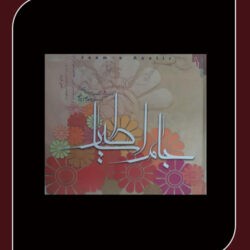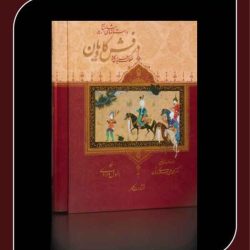

Myths and symbols of Iran and India
5 $
The book “An Introduction to the Myths and Symbols of Iran and India” was written by Dr. Abolghasem Dadour and Elham Mansouri and published by Kalhor Publications.
Symbols and myths have existed in every society and are a reflection of some religious beliefs and a form of psychotherapy for human fear of war, hunger, disease and death that have existed among nations in different historical periods. The specific geographical location and diverse nature have been the basis for the emergence and formation of the ancient civilizations of Iran and India. In terms of the age and extent of the ancient civilizations of Iran and India and the emergence of gods, myths and symbols, the scope of research in this vast civilization has always been of interest to researchers.
Race, language, religion, and historical relics indicate the great commonality between these two civilizations. Studying and understanding the symbols and myths of Iran and India during the Achaemenid to Sassanid periods in Iran and its equivalent during the Maurya to Gupta periods in India is a suitable platform for understanding and comparing the cultural commonalities of the two civilizations, including the belief in goodness and praising good gods and common myths such as the snake, the sun, the cow, water, etc. Accordingly, in this book, in addition to introducing and explaining myth, its types, and the history of each in Iran and India, the author has conducted a comparative study of the symbols and myths in these two civilizations in ancient times.
Chapters of the book: An Introduction to the Myths and Symbols of Iran and India
- Chapter One: Geographical and Historical Position of Iran and India in Ancient Times
- Chapter Two: The History of the Emergence of Symbols and Myths in Iran and India
- Chapter Three: Cultural and Religious Commonalities between Iran and India in Ancient Times
- Chapter Four: A Study of Iranian Symbols from the Achaemenid Period to the End of the Sasanian Period
- Chapter Five: A Study of Iranian Myths from the Achaemenid to the Sasanian Period
- Chapter Six: A Study of Indian Symbols from the Maurya Period to the End of the Gupta Period
- Chapter 7: A survey of Indian mythology from the Maurya period to the end of the Guptas
- Chapter Eight: Comparative Study of Symbols and Myths of Iran and India in Ancient Times
| Weight | 300 g |
|---|---|
| Dimensions | 21 × 12 × 1.5 cm |
The above work was introduced to Honare Iranian Holding by the creator of the work of art (publisher), and with their direct permission, we have taken action to offer the work of art. The price of this work of art has been determined by the creator of the work and with the advice of the marketing department of the Hamie Honare Mana Institute.
Show only reviews in English ()
"*" indicates required fields
It is established that in Iranian Art Holding, specialized and practical services are provided to artists and dear art friends, which are often supportive and free...

In the current active platforms, we don't get any income from artists in general. We will get income by really supporting their abilities and making money by creating diverse relationships with artists' enthusiasts and investors.
You can also contribute significantly to this success and support by sharing information and, of course, following the standards and rules of activity and purchasing in the existing infrastructure.
In relation to effect guarantee or money back guarantee, you should also pay attention to the fact that only products with various guarantees such as: Price guarantee, return guarantee, authenticity check, etc. are provided that the seller has activated this feature on the work and you can see this feature in the shopping cart under the name of the work of art, otherwise this service cannot be used. It is obvious that we are not responsible and do not interfere in any agreements, transactions and commitments outside the mentioned space.
If necessary, you can inform us about possible problems by reporting violations (on the page of each product) or by calling our support unit.
Only goods and works can be returned if they have a discrepancy at the time of receipt with the information contained in the description and features of the product and the seller has created this feature for the product.
(Ie if it has a guarantee)
Dear customer must notify the support department of Iranian Art Holding and the seller through the ticket related to the goods within the maximum period specified for the warranty from the time of receiving the goods.
* Please note: The seller can submit a settlement request to the holding 72 hours after the stage is completed (sending the goods or works) and the holding is obliged to pay the fee and the settlement.
In order to use the money back guarantee, return of goods or works, all purchase steps must be done only by the purchase portal in the Iranian Art Holding store.
Obviously, otherwise (direct purchase from the seller) it will not be possible to provide after-sales service and authentication.










Reviews
There are no reviews yet.